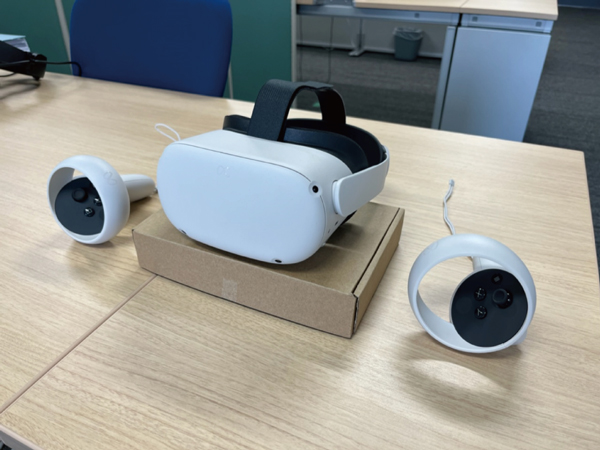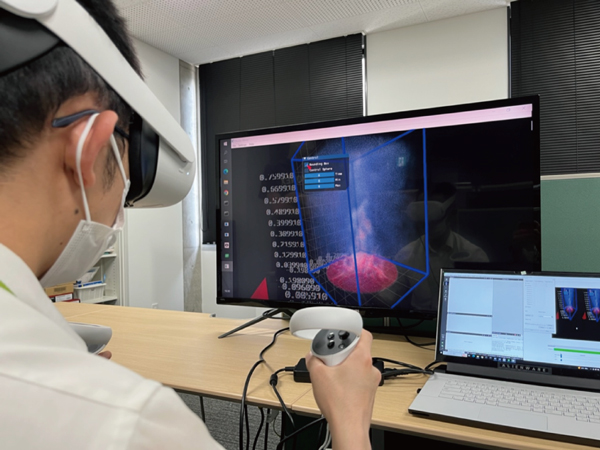
Fig.1 Configuration of remote virtual reality (VR) visualization software VR-PBVR (PVBR: particle-based volume rendering)

Fig.2 Experimental equipment

Fig.3 Use case of VR-PBVR
Scientific visualization using virtual reality (VR) is effective for intuitively understanding the results of large, complex nuclear simulations on supercomputers. A head-mounted display (HMD) (Fig.2) uses sensors to track head movements (head tracking) to provide an immersive stereoscopic view. Since head tracking involves updating images, it is necessary to generate images at a speed of 60 frames per second (FPS) or faster. However, since conventional methods convert all three-dimensional (3D) data into visualization elements called polygons, the visualization data becomes as large as the original data, making it difficult to exceed of 60 FPS required for HMD.
A visualization technique called particle-based volume rendering (PBVR) converts 3D data into particle data for visualization and projects it onto a screen (Fig.1). The number of particles required for PBVR is comparable to the size of the screen resolution, namely, several million particles (approximately 100 megabytes) for 1,0242 pixels; its size is greatly compressed compared to the 3D data, enabling high-speed data transfer and visualization processing. We earlier developed a client-server (CS) remote visualization software named CS-PBVR by taking advantage of this feature.
In this study, we developed VR-PBVR, which is an extension of CS-PBVR for HMD (Fig.1), to achieve remote VR visualization of large-scale data, which is difficult to achieve with the conventional methods. Unlike visualization on a display, the viewpoint in an HMD keeps changing with head tracking. Therefore, we constructed a processing system that constantly calculates the changes in the viewpoint and implemented a high-speed binocular image generation function on a PC. In addition, by developing a gesture control function using a controller instead of the conventional mouse operation, we enabled the manipulation and movement of visualization data using both hands in VR space. These allowed us to use PBVR in VR environment.
VR-PBVR was applied to the thermal hydraulic analysis data of approximately 33 million elements on a supercomputer (Fig.3). Conventional visualization software provides a rendering speed of <1 FPS, while VR-PBVR achieves > 90 FPS, enabling smooth VR visualization with HMD. VR-PBVR is expected to advance the understanding of large-scale 3D time-series data in computational nuclear engineering.
This research was supported by JSPS KAKENHI Grant-in-Aid for Scientific Research (C) (JP20K11844), “Interactive In-Situ Visualization of Large-Scale Distributed GPGPU Simulations.”
(Takuma Kawamura)